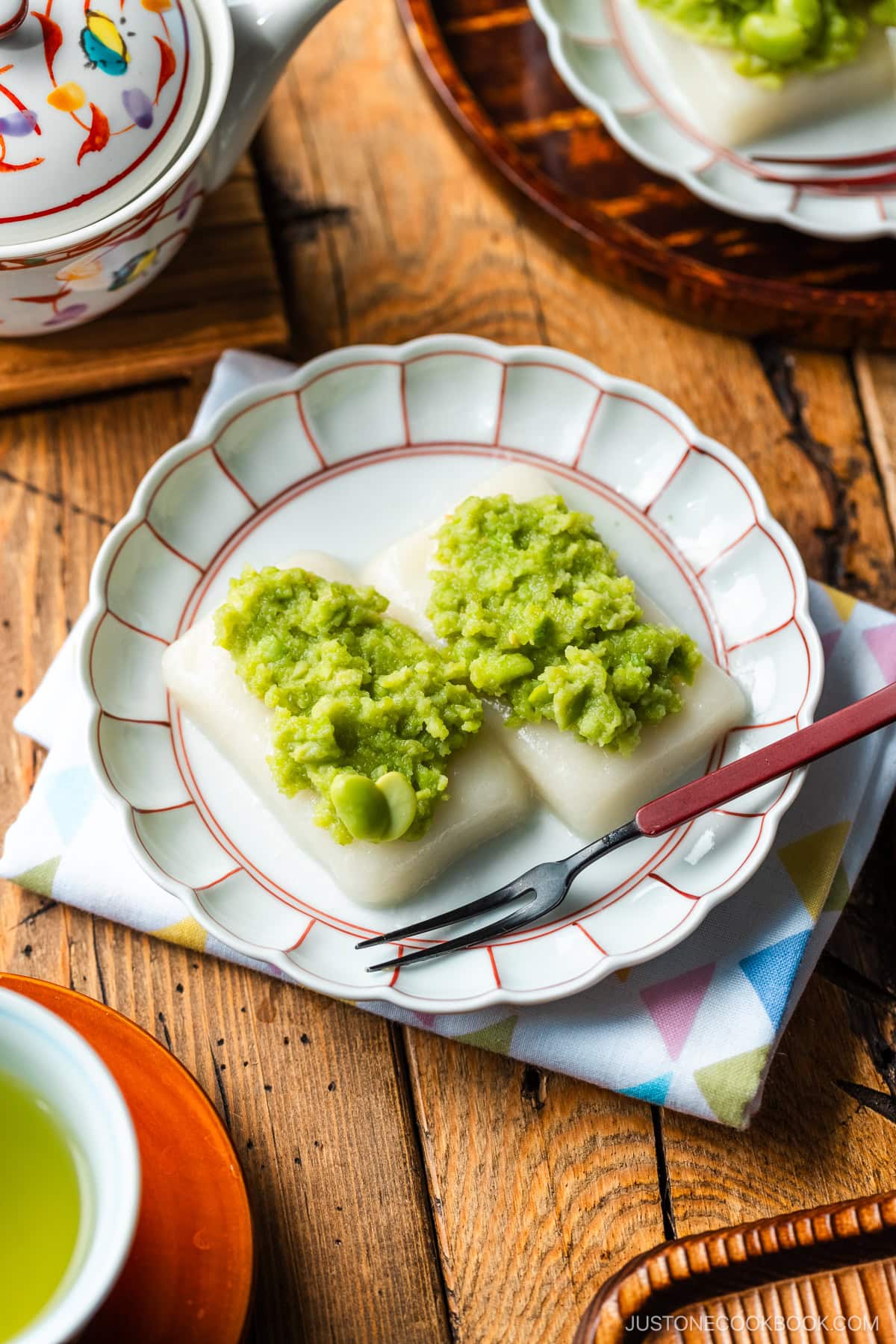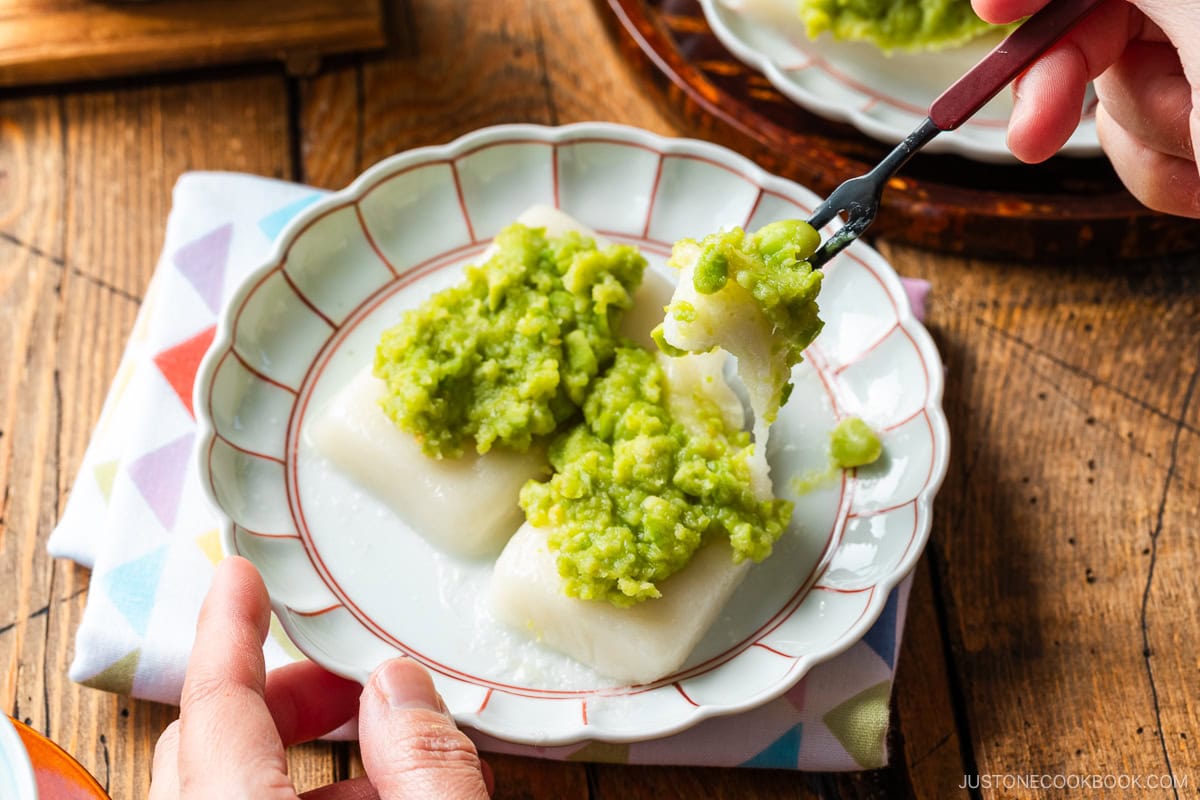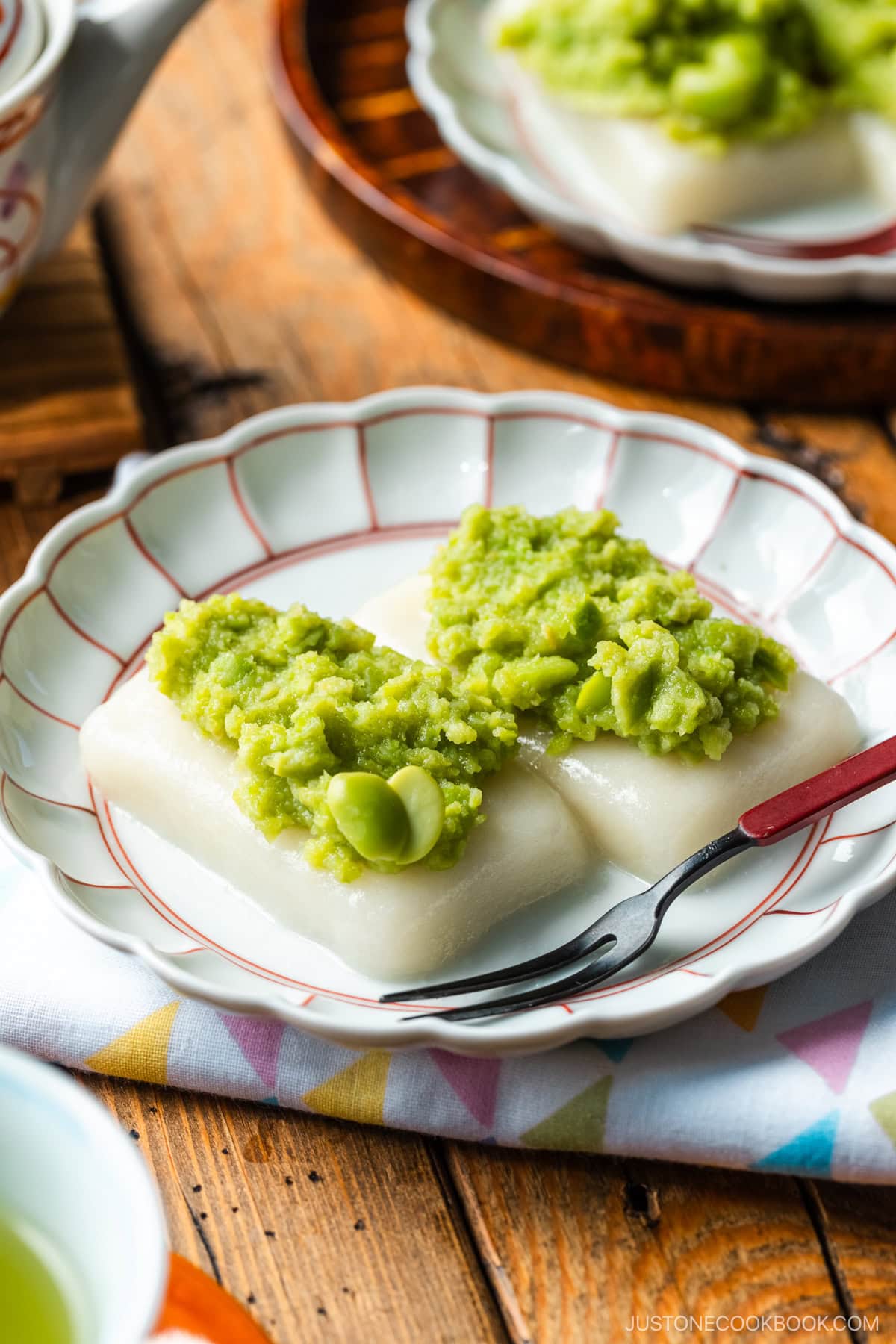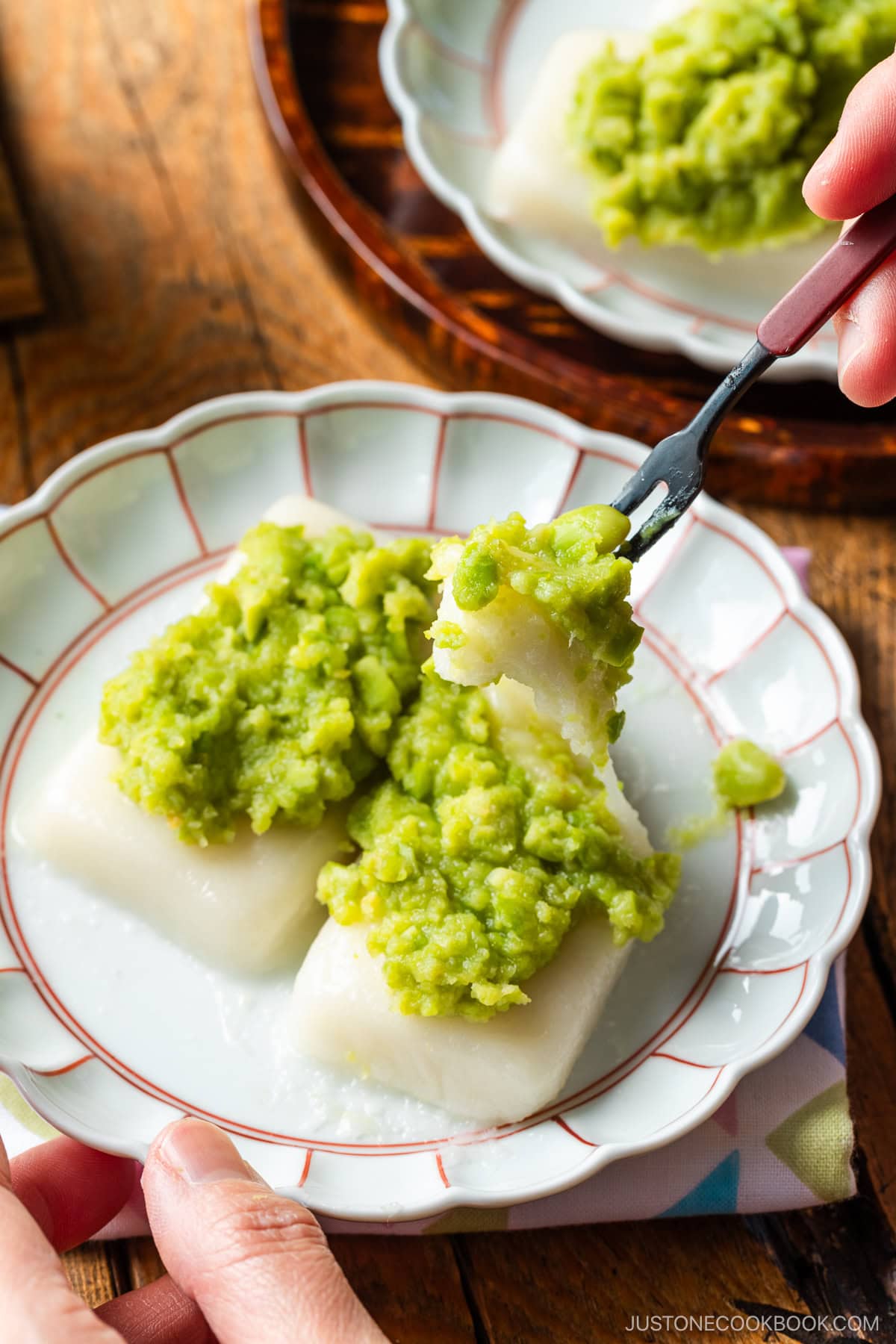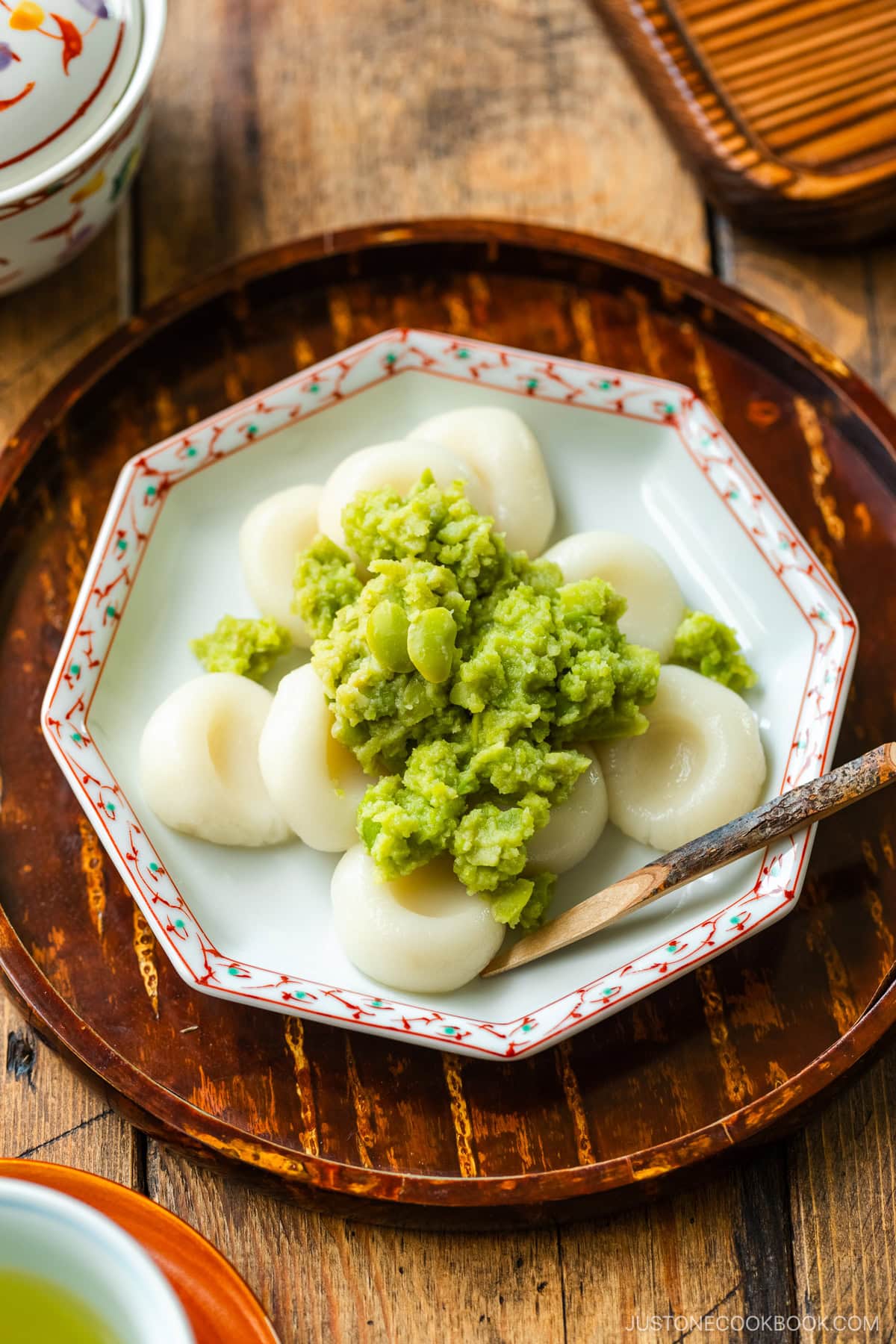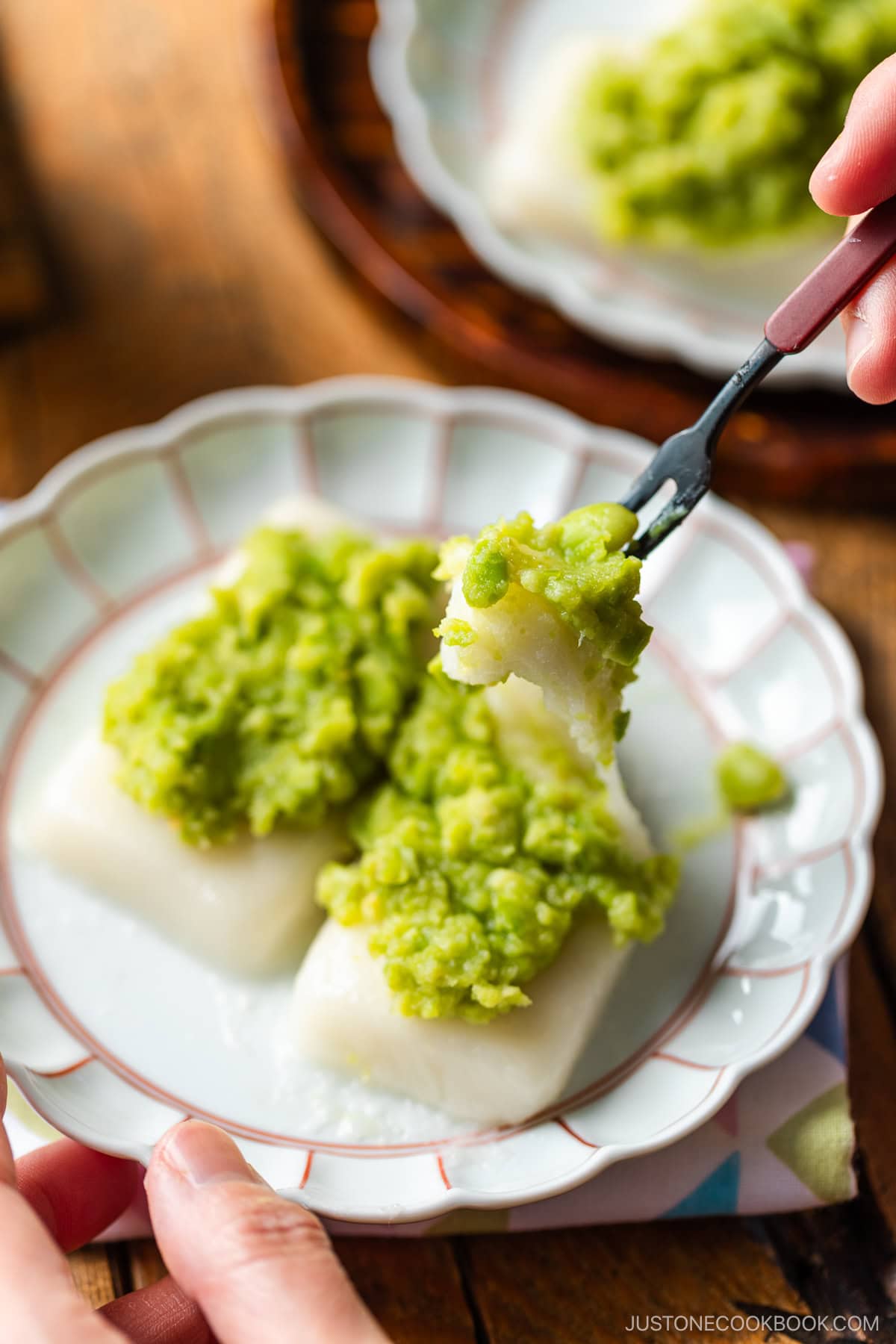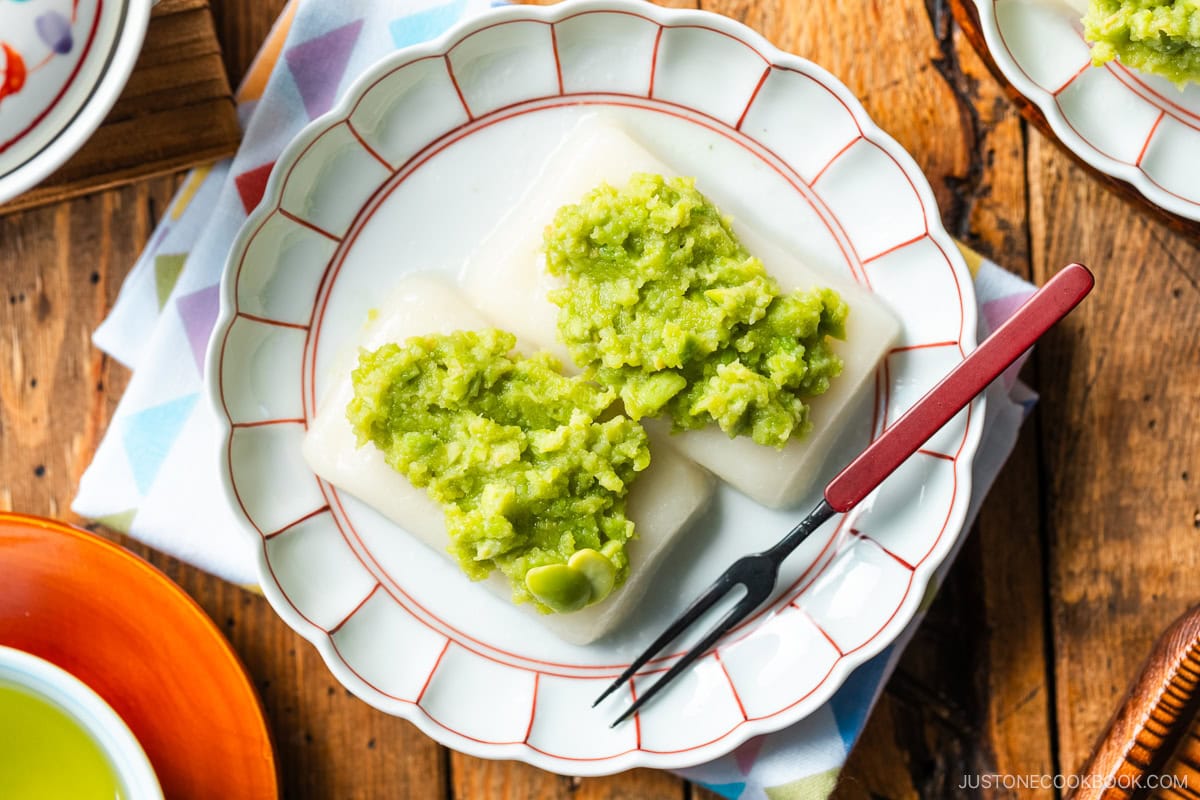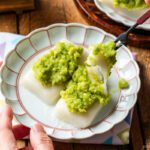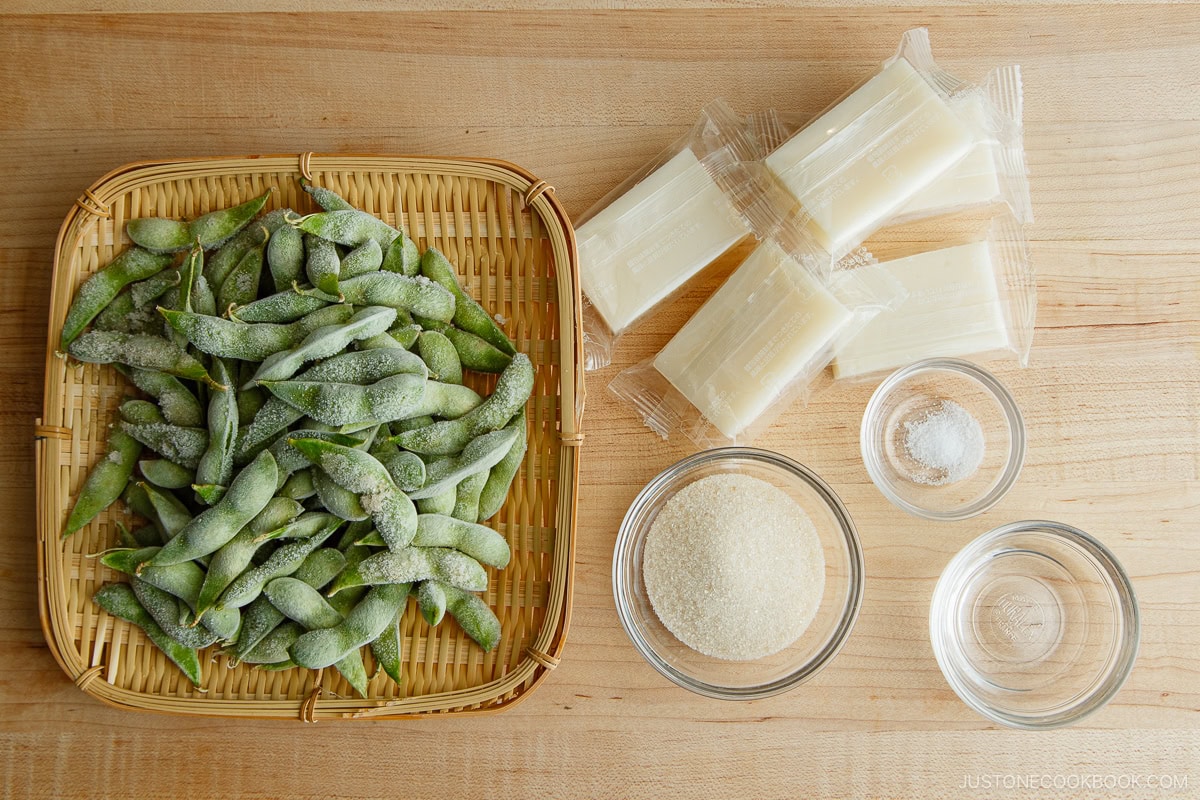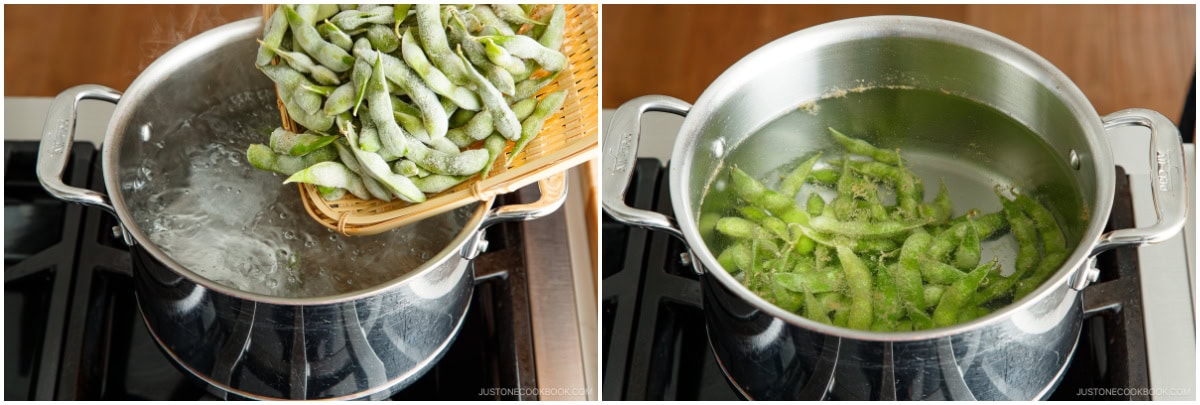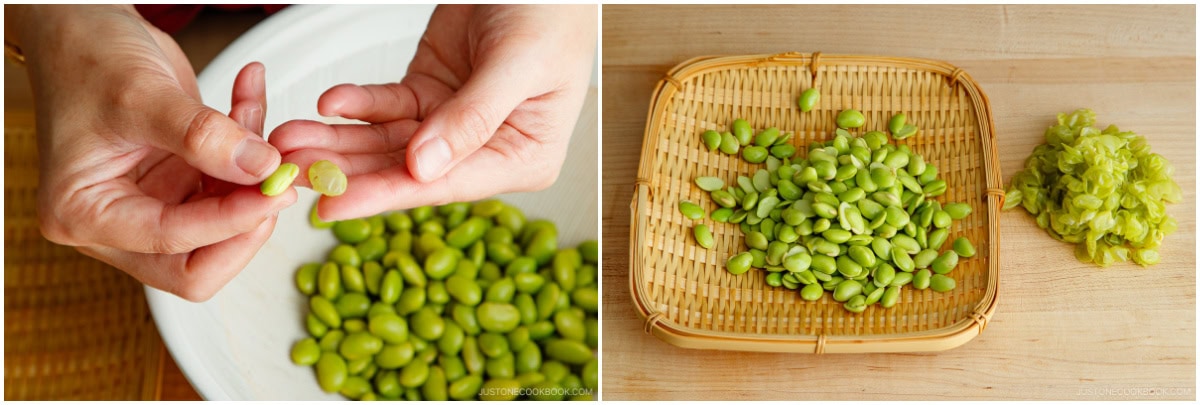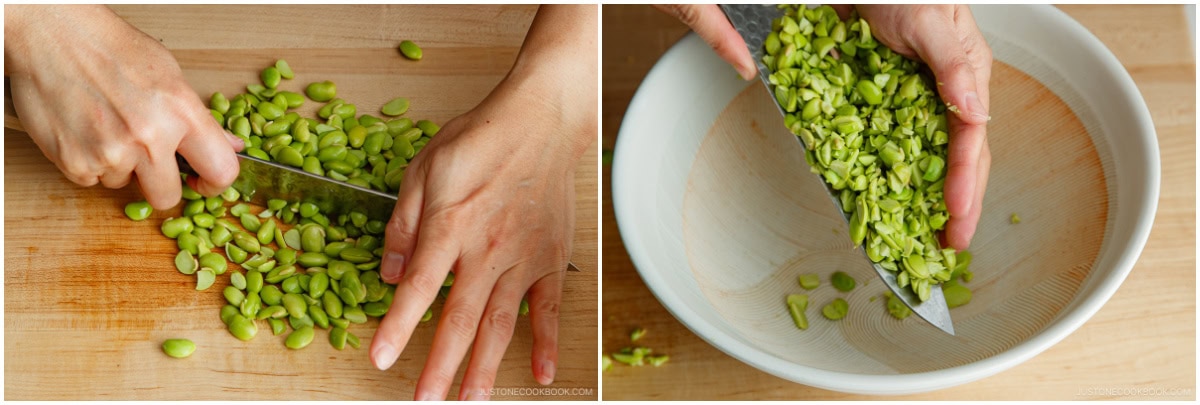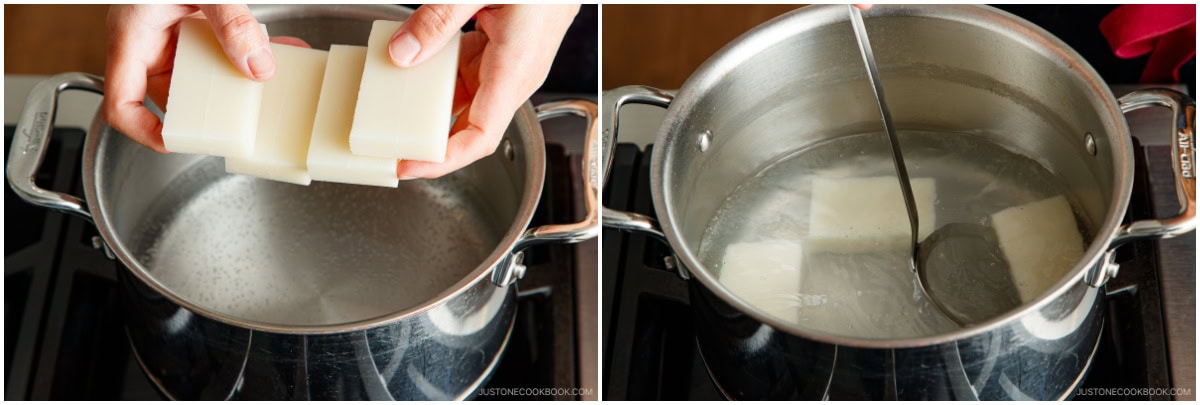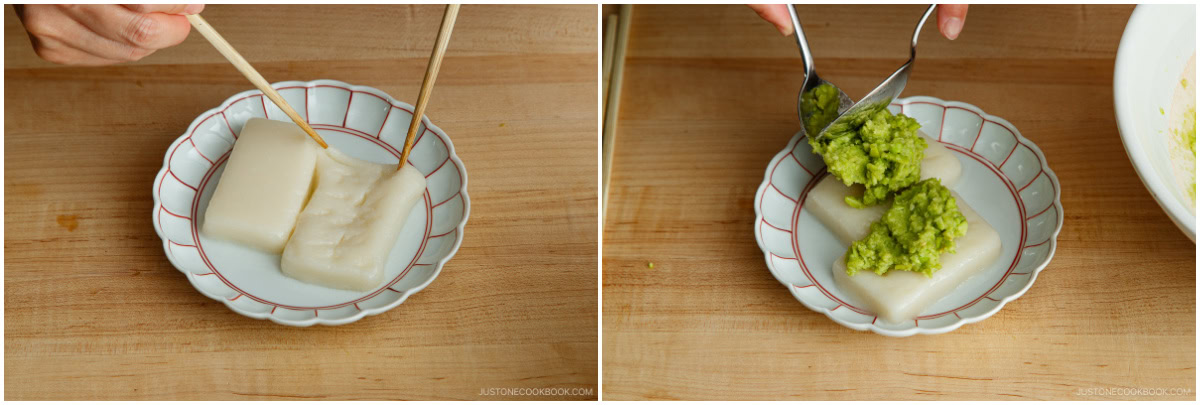Japan’s prefectures and regions strongly identify with their locally farmed agriculture and unique culinary traditions. The specialty foods of each region are nearly legendary! One such local delicacy of Miyagi Prefecture is zunda, a sweet paste made from edamame that’s famously grown in the Tohoku region of northeastern Japan. Locals in cities like Sendai add this sweet bean paste with a vivid green color to all kinds of snacks and desserts. You can enjoy a zunda shake, zunda ice cream, zunda parfait, zunda daifuku, and zunda roll cakes! One of their most popular local dishes is Zunda Mochi (ずんだ餅), the traditional dessert recipe that I’m sharing today. Now, you might be skeptical about using edamame in a sweet snack like this. But trust me, this dish will win you over at first bite! I’ll show you how to make this easy recipe so you can try it for yourself at home.
What is Zunda Mochi?
Zunda mochi (ずんだ餅) is a glutinous rice cake topped with mashed and sweetened edamame paste. Sugar and a pinch of salt give the zunda a sweet taste, which may even remind you a bit of anko, or Japanese sweet red bean paste. This traditional dish dates back to at least the 15th century. Zunda mochi was said to be a favorite dessert of the famous Sendai ruler, Date Masamune (1567–1636), who legend says crushed edamame with the handle of his sword. There are various theories about the origin of its name; one theory suggests that “zunda” derives from the word zuda (豆打), which means “bean mashing. Today in Miyagi Prefecture, it is customary to eat this traditional specialty during important events such as New Year’s Day, weddings, memorial services, and funerals. Zunda mochi is also a popular souvenir to bring home from a visit to the region.
Why You’ll Love This Recipe
This dish is simple, quick, and so yummy!
Easy to make — It uses just 4 ingredients. Quick — Ready in just half an hour. High in fiber and protein — Edamame is high in fiber, protein, and other nutrients. It’s one of the traditional superfoods of Japan! Fun to make with kids — Invite your young cooks to help shell and pound the edamame. After all, making zunda mochi was a family affair back in the day, with children helping to extract the young soybeans from the pods.
Ingredients for Zunda Mochi
With just 4 freezer and pantry ingredients, you can make this delicious Japanese confectionery anytime the mood strikes.
How to Make Zunda Mochi
Recipe Tips and Techniques
Buy frozen edamame in their pods. These pods are flash frozen, so they’ve retained their flavor and texture. The outer shell also helps protect the young soybeans inside when you boil them. I like to use frozen pods for the convenience, as I often have them in the freezer and they don’t need advanced prep before cooking. While you could use fresh pods if you have them, they do take longer to prepare and cook. Cook the mochi just before serving. Mochi gets hard and dry when it’s cold, so you must boil it just prior to serving. Cooking them gives the rice cakes a soft, stretchy, and chewy texture. Be sure to serve it while hot or warm. Use dried and pre-cut mochi. For maximum convenience, I love to use kirimochi for this dish. It’s already cooked and dried, then pre-cut and individually wrapped. All you have to do is boil it for 4–5 minutes and it’s ready to eat. Because kirimochi is shelf stable and keeps for many months, it’s an affordable and popular pantry food. It’s the next best thing to fresh! Optionally, you could use shiratama dango instead of kirimochi as a base for your zunda mochi. See the my blog post and recipe to learn how to make these chewy and gooey mochi balls.
How to Store
You can make zunda paste ahead of time and/or keep the leftovers. However, you will need to boil the mochi right before serving as rice cake gets hard in the refrigerator.
To Refrigerate: You can keep the zunda paste in an airtight container for up to 3-4 days in the refrigerator. To Freeze: Transfer the zunda paste to a resealable freezer bag or freezer-safe container. Store in the freezer for up to 3 months. Defrost in the refrigerator overnight before using.
What to Serve with Zunda Mochi
This Japanese confectionery pairs well with any variety of Japanese Green Tea like sencha, hojicha, genmaicha, and gyokuro. Wish to learn more about Japanese cooking? Sign up for our free newsletter to receive cooking tips & recipe updates! And stay in touch with me on Facebook, Pinterest, YouTube, and Instagram.
